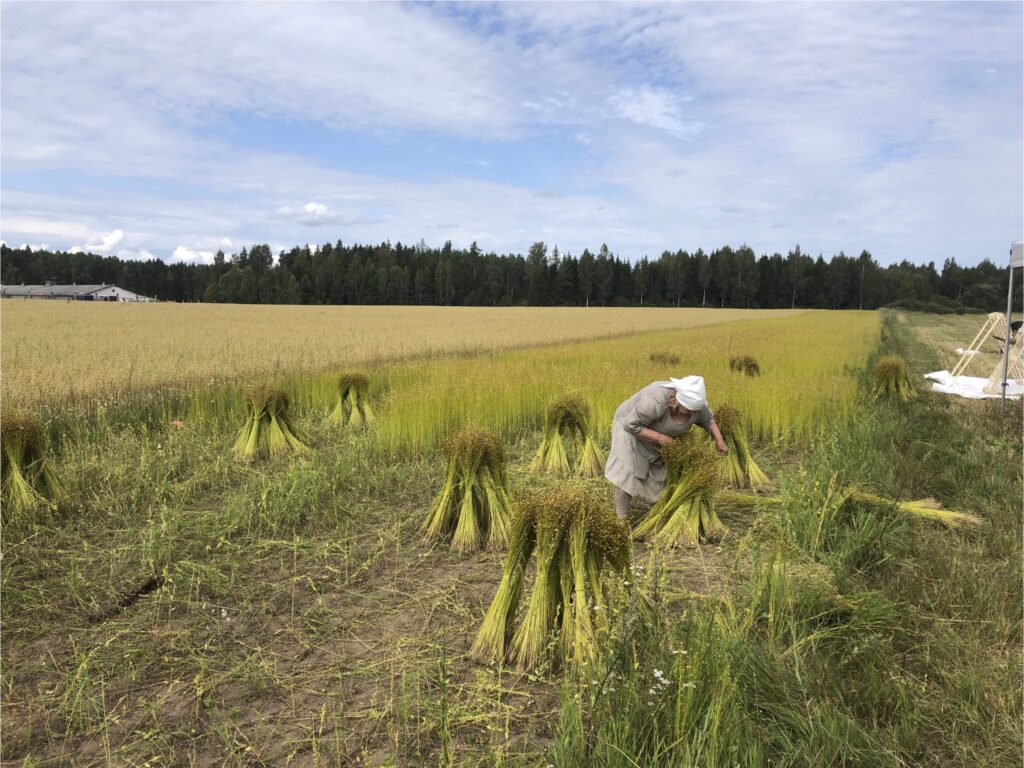Working Group 3: Fibrescapes

Team leaders: Joanna Tamar Storie and Vineta Gailite (EMU)
Field trip destination: A tour of south Estonian locations where a) flax is grown, harvested and processed, b) sheep are raised and the wool harvested and used for craft products and c) a factory which spins yarn from sheep, angora and alpaca wool. There will be demonstrations and chance to have a go at some craft activities.
Lectures:
- The concept of the “fibreshed” and fibrescape” (Joanna Storie)
- The opportunities for applying the concept in the Baltic States (Vineta Gailite).
Workshop: This theme will focus on the traditional and new uses of agricultural land for producing fibre – flax, hemp, wool (sheep and alpaca). Locally produced fibres and products are of increasing interest and involve impacts on the landscape and on cultural values as well as ways to resurrect old, often lost values and skills in the landscape, which have the potential for new and modern uses.
Local challenge: How to understand and develop the potential for reintroducing widespread cultivation and use of fibre-producing crops and animal husbandry and what it might mean for the landscape
Research questions:
- What elements and features might be introduced into the landscape as a result of developing or reintroducing fibre crops or animals?
- What might a landscape with a significant amount of plant fibre production (hemp, flax, nettle) and animal fibre production look like?
- What might be the positive and negative impacts on the landscape and bioeconomy of increased fibre production?
Tasks:
- To develop a typology of landscape elements used in fibre production and determine what kinds of locations
- To visualise some typical landscapes containing the landscape elements and areas of plant and animal fibres.
- To define the different impacts in relation to the bioeconomy, both positive and negative.
